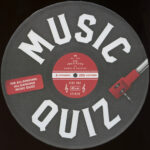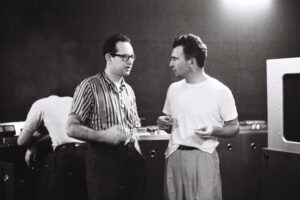The connections between country, blues and early jazz are clear. Where some forms of modern jazz fit in the the larger landscape is less clear. The key difference is that some modern jazz relies on complexity and in many cases de-emphasizes the melodies. They are sophisticated and can sound academic and inaccessible. The soul seems to have been replaced by technical proficiency.
I think this is fair to point. There is jazz that is too cool for school, as they say. The music seems cordoned off from the rest of us by that very speed and agility. At the same time, the music can seem to lack soulfulness. However, it is a very dangerous thing to make these assumption too quickly about an artist or specific piece of music. For one thing, it is impossible to know what is going through the mind and heart of another person. A lack of obvious melody, great speed and technical mastery may be a perfect representation of that person’s inner life.
The historic context in which the music happens is vital as well. The jazz that emerged in the second half of the 20th century followed a first half that was dominated by three awful events — the two world wars and the often forgotten influenza epidemic in between — that took the lives of far more than 100 million people. Many of those deaths were gruesome murders. The art and culture emerging from this catastrophic age should be discordant, atonal and have a technical feel. It was not a pretty and melodic era.
All this came to mind when I was looking into Eric Dolphy. The short version is that Dolphy was born in 1928 and grew up in Los Angeles. He was a child prodigy and became a leading player in New York City. Dolphy, who played a number of wind instruments, had a close association with Charles Mingus.
The music is complex and demanding. This is from a 2014 New York Times article by Ben Ratliff:
“The thing that really astounded me,” [flutist and composer James] Newton said recently, “was that this was a person who thought very profoundly about the organization of his music.” Dolphy wrote out hundreds of his altered or “synthetic” scales. In some cases, including on the individual parts for “Out to Lunch!,” he wrote out the unusual scales beneath the composition, as a possible basis for improvisation.
Seeing the connection between Dolphy’s music and ragtime jazz and delta blues takes a bit of imagination. But it is there.
Music fits its times times. On one level, Dolphy and his contemporaries certaintly were showing off their hard won technical chops. On another, they were just as reflective of their times as Scott Joplin or Son House.
The ways in which music expands is nothing short of miraculous. The clip above, recorded in Norway only a couple of months before Dolphy’s premature death, starts with Billy Strayhorn’s “Take the A Train” and quickly becomes something completely different. The performance features great solos by Dolphy on bass clarinet (at the 4:30 market) and, earlier pianist Jaki Byard. Mingus is on bass, Clifford Jordon on tenor sax, Johnny Coles on trump and Dannie Richmond on drums.
Dolphy’s death in Berlin in 1964 was caused by what his bio says was undiagnosed diabetes, which sounds awful. He was only 36 years old.


















Recent Comments